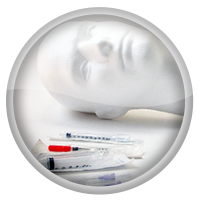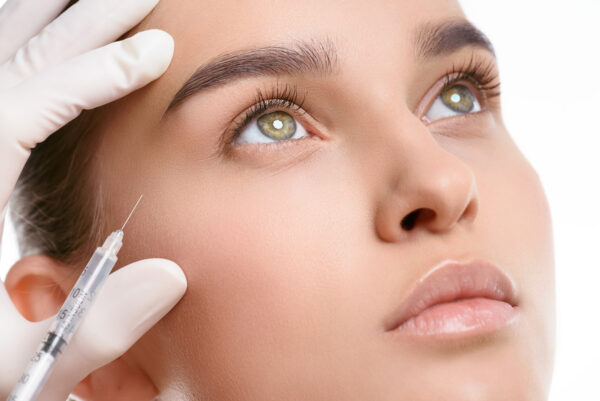Skip To Training Course Details >>

You want to increase your clientele, but your resources are limited, your time especially so. Adding new services in order to acquire new patients usually involves a significant investment in equipment and training. We understand and we want to help. This year, according to Google, more than 246,000 searches are done for information on Botox every month. Botox typically isn’t covered by insurance, so individuals seeking Botox Injections have the disposable income to pay for it. No anti-aging treatment offers results as quickly or as long lasting as Botox. This is why Botox is the most widely sought after anti-aging treatment in the United States.
 Our Botox training doesn’t stop at teaching you how to administer Botox injection, we also teach you how to explain the benefits of treatment to your prospective patient and how to turn your patients into huge fans that will recommend you to everyone they know.New injectable products are being approved all the time, and injectable products are consistently being approved for new uses. This is why is it so important to make certain you find a course that teaches the most current FDA approved as well as off-label treatments for both aesthetic and therapeutic uses and how they should be used with dermal fillers. Many Botox injection training courses will get you qualified, but our course will offer you added credibility. Course director Dr. Howard Katz is named on the patents for all current Botulinum toxin products. The course is offered online, but on successful completion, you will receive a certificate of completion from Dr. Katz himself.
Our Botox training doesn’t stop at teaching you how to administer Botox injection, we also teach you how to explain the benefits of treatment to your prospective patient and how to turn your patients into huge fans that will recommend you to everyone they know.New injectable products are being approved all the time, and injectable products are consistently being approved for new uses. This is why is it so important to make certain you find a course that teaches the most current FDA approved as well as off-label treatments for both aesthetic and therapeutic uses and how they should be used with dermal fillers. Many Botox injection training courses will get you qualified, but our course will offer you added credibility. Course director Dr. Howard Katz is named on the patents for all current Botulinum toxin products. The course is offered online, but on successful completion, you will receive a certificate of completion from Dr. Katz himself.
 You’re probably wondering how in the world you can learn to administer Botox injection over the internet. Prior to the course, you will receive a kit that includes a foam head along with all of the needles and syringes needed. Throughout the course, the instructor will demonstrate each treatment, showing the placement, angle and depth from multiple angles. You will inject the foam head in the same manner and submit photos of each. We will assess the location, angle, depth and dose of each and either verify the accuracy of your technique or coach you on how to improve. Once you have correctly demonstrated accurate technique for all treatments, we will send your certificate.
You’re probably wondering how in the world you can learn to administer Botox injection over the internet. Prior to the course, you will receive a kit that includes a foam head along with all of the needles and syringes needed. Throughout the course, the instructor will demonstrate each treatment, showing the placement, angle and depth from multiple angles. You will inject the foam head in the same manner and submit photos of each. We will assess the location, angle, depth and dose of each and either verify the accuracy of your technique or coach you on how to improve. Once you have correctly demonstrated accurate technique for all treatments, we will send your certificate.
 During the course, you will watch the class in high definition from a computer, tablet or smartphone and you’ll be able to talk to the instructor just as you would if you were right there in the classroom. You don’t have to be a computer expert to attend. If you can send an email or surf the internet, you’ll have no trouble. When you sign up, you’ll receive an email with a link to the class. As you watch the class, type any questions you may have into the chat box. Use the camera on your computer, or any other digital camera to take pictures of your technique and upload them.
During the course, you will watch the class in high definition from a computer, tablet or smartphone and you’ll be able to talk to the instructor just as you would if you were right there in the classroom. You don’t have to be a computer expert to attend. If you can send an email or surf the internet, you’ll have no trouble. When you sign up, you’ll receive an email with a link to the class. As you watch the class, type any questions you may have into the chat box. Use the camera on your computer, or any other digital camera to take pictures of your technique and upload them.
Maybe you’re still skeptical. One notable advantage to taking a course online is that you still have access to all of the recorded lectures and other course material anytime, day or night. Missed something? Still not quite clear on something? Just got lost at some point and don’t feel as comfortable as you’d like with the procedure? Not a problem. Go back and rewatch the class as much as you want whenever you want. Of course, there’s also the fact that you don’t have travel costs or time away from the office and online Botox injection training becomes rather attractive.
Need more reasons to consider our Botox Injection Training course?

- You can ask questions of Dr. Katz after the class is over, or consult with him on treatment plans for specific patients. Send photos of the patient and he will respond within 24 hours.
- If you live near San Diego or plan on visiting you may attend semi-private hands on classes anytime, for free.
- Get a discount on any of our live patient Dentox programs.
- Receive priority access to all new courses and webinars.
- Receive AGD continuing education credit. Many Botox injection training courses do not offer this.
This course is intended for doctors, nurses and other healthcare professionals. State laws vary as to what specific professions are allowed to administer Botox. Be sure you will be eligible to administer Botox before signing up. Along with online Botox injection training, we also offer local in-person classes. If you have taken the online course, the cost will be deducted from the live class. We also offer private consultation in our office.
When you sign up for Botox injection training, you’ll not only receive the foam head, syringes and needles, you’ll also receive detailed information on pricing on all of the various Botox products and alternative products such as Juvederm and Restylane and when these products are preferable to Botox. You’ll also receive information on how to earn the kind of loyalty from your clients that has them raving about you. It’s our goal that you not only gain proficiency with with products, but that you are also able to develop a loyal following. You will also receive manuals, a list of resources and sample forms.

Treatment with Botox takes only a few minutes and requires no recovery time, many patients stop in for it over their lunch hour. Results are apparent in three to ten days and last three to four months, longer with repeated use. Botox injection is safe and carries few side effects, which are typically mild and temporary.
Our goal is to provide comprehensive training that you can easily integrate seamlessly into your existing practice. By the time you finish the course, you will know:
- The history of Botox as well as how to prepare it and how it works
- When to use Botox and when to use dermal fillers
- Indications and contraindications of Botox
- Facial anatomy and physiology, particularly in terms of aesthetics
- Differences between the various products and how to use them in various circumstances
- Different types of dermal fillers
- Proper techniques for every use of Botox
- How to conduct patient consultations
Course participants gain both extensive knowledge of aesthetic practice, and continued education credit.















